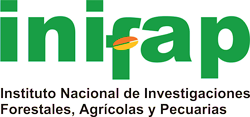Effect of pre-emergent herbicides on weed control and onion development under fertigation conditions
DOI:
https://doi.org/10.29312/remexca.v11i5.2337Keywords:
fertigation, herbicide, onionAbstract
The onion is slow growing, low in height and has small roots. For this reason, it has a disadvantage in the face of weeds, which, if not controlled, affect crop yield. The objective of the present work was to evaluate the effect of the combination of the pre-emergent herbicides Pendimethalin, Oxifluorfen, Oxadiazon, Acetoclor and Flumioxazin on the weed population and the crop yield. The experiment was established during the autumn-winter 2016-2017 cycle on a farm in Culiacán, Sinaloa (Mexico). There were 16 treatments, including the control without herbicide application. The experimental design was randomized complete blocks, with three replications. In the variable plant density, the control without application was the treatment with the highest weed density. Also, the best combination to inhibit weed emergence was Acetochlor with Flumioxazin. In addition, Flumioxazin alone or combined is among the treatments with the lowest density of weeds. Regarding the variable weed biomass and herbicide efficiency, all treatments were superior in efficacy to the control. Furthermore, the combination of Pendimethalin with Acetochlor had better performance with 0.253 kg m-2. In the variable yield of the onion crop and weed index, the best combinations were Pendimethalin with Acetochlor and Oxifluorfen only with 2.97 and 2.92 kg m-2, respectively. In contrast, the Flumioxazin treatment alone had lower performance. Regarding the loss of biological effectiveness of
herbicides, it was found that, overall, due to the loss of effectiveness, an average of 674 individuals of weeds ha-1appear daily.
Downloads
Published
How to Cite
Issue
Section
License
Copyright (c) 2020 Revista Mexicana de Ciencias Agrícolas

This work is licensed under a Creative Commons Attribution-NonCommercial 4.0 International License.
The authors who publish in Revista Mexicana de Ciencias Agrícolas accept the following conditions:
In accordance with copyright laws, Revista Mexicana de Ciencias Agrícolas recognizes and respects the authors’ moral right and ownership of property rights which will be transferred to the journal for dissemination in open access. Invariably, all the authors have to sign a letter of transfer of property rights and of originality of the article to Instituto Nacional de Investigaciones Forestales, Agrícolas y Pecuarias (INIFAP) [National Institute of Forestry, Agricultural and Livestock Research]. The author(s) must pay a fee for the reception of articles before proceeding to editorial review.
All the texts published by Revista Mexicana de Ciencias Agrícolas —with no exception— are distributed under a Creative Commons License Attribution-NonCommercial 4.0 International (CC BY-NC 4.0), which allows third parties to use the publication as long as the work’s authorship and its first publication in this journal are mentioned.
The author(s) can enter into independent and additional contractual agreements for the nonexclusive distribution of the version of the article published in Revista Mexicana de Ciencias Agrícolas (for example include it into an institutional repository or publish it in a book) as long as it is clearly and explicitly indicated that the work was published for the first time in Revista Mexicana de Ciencias Agrícolas.
For all the above, the authors shall send the Letter-transfer of Property Rights for the first publication duly filled in and signed by the author(s). This form must be sent as a PDF file to: revista_atm@yahoo.com.mx; cienciasagricola@inifap.gob.mx; remexca2017@gmail.
This work is licensed under a Creative Commons Attribution-Noncommercial 4.0 International license.



